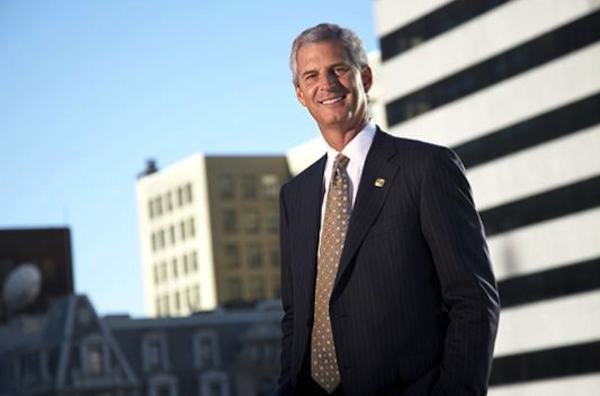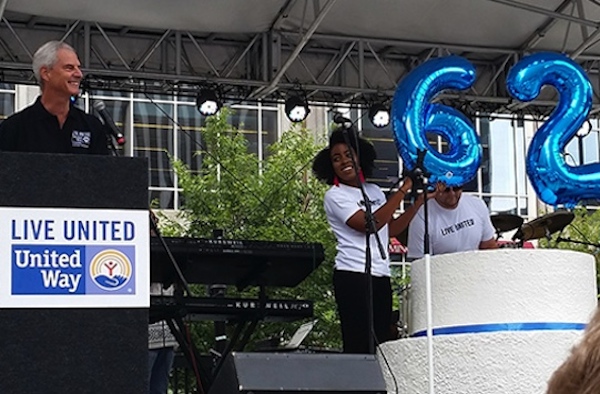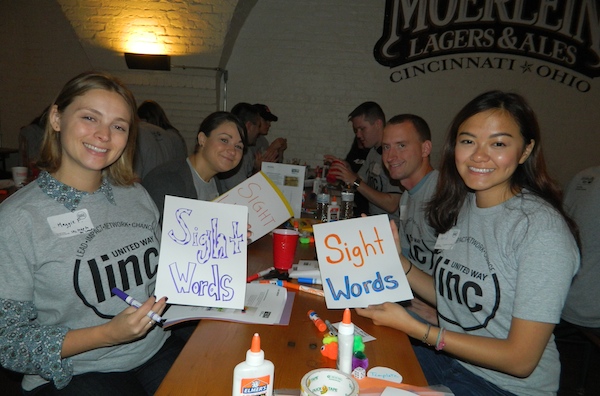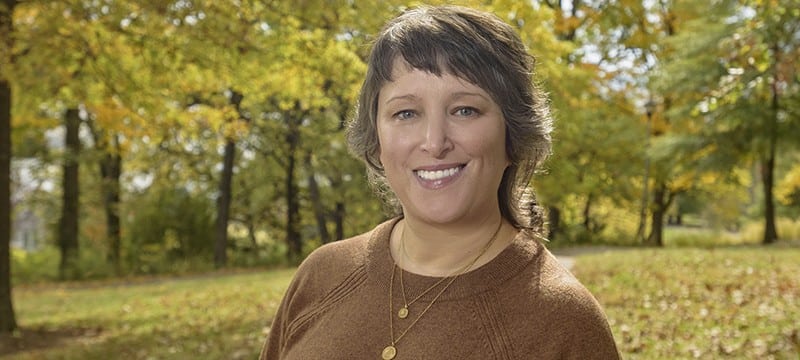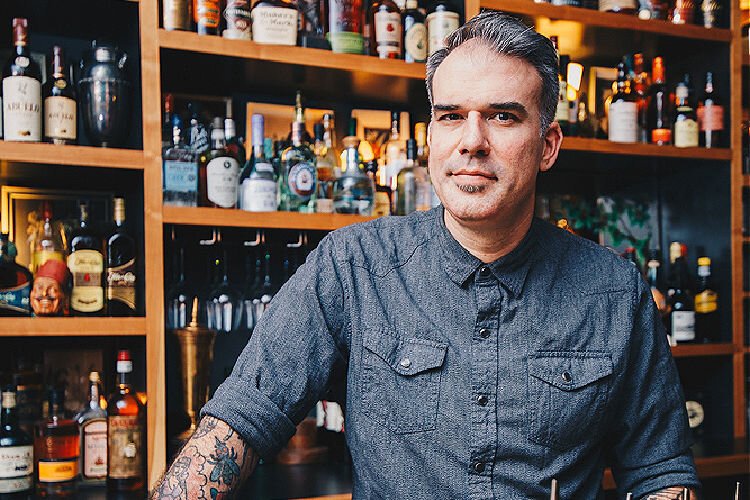Kevin Kabat injects innovation into the centennial United Way campaign
Retiring as Fifth Third CEO, Kevin Kabat has ramped up efforts to bring innovation and long-term planning to the 100th anniversary United Way fundraising campaign in Greater Cincinnati.
The stars were aligning for United Way of Greater Cincinnati’s 2015 campaign. It would be the organization’s centennial annual giving drive, and it would be headed by the CEO of one of United Way’s largest local corporate supporters, Kevin Kabat of Fifth Third Bank.
Then a few months ago, before the campaign officially got underway, Kabat announced he’d be retiring from Fifth Third later this year.
Would Kabat defer to another local CEO because of his impending retirement? Could he get excited about the daunting fundraising challenge as he prepared to leave Cincinnati’s corporate leadership stage?
It turns out that Kabat has been even more engaged with and enthusiastic about the campaign than he anticipated. Frankly, he says, he’s had more time available to devote to the cause as he transitions out of Fifth Third’s top role.
And that’s a huge momentum boost as United Way of Greater Cincinnati celebrates its 100th birthday.
The local chapter is a shining star among United Ways across the U.S., running the nation’s sixth largest annual campaign despite being in the 35th largest U.S. media market. The campaign generates over 80% of the operating revenue needed to support hundreds of nonprofit agencies and organizations across a 10-county region.
Kabat says he’s trying to focus the local United Way campaign to be more long-term oriented instead of basically starting over every year. Now that his own corporate career is winding down, he’d like United Way to start behaving more like a corporation and think beyond one year and one campaign at a time.
Kabat set a huge number as the campaign’s goal this year: $62 million, about $1 million more than last year. The final results will be announced Oct. 28 at a lunch-time celebration at Duke Energy Convention Center.
When asked how he’s tried to push innovation in the campaign, Kabat points to two specific programs: the LINC web-based platform (Lead, Impact, Network, Change) that merges social events with fundraising for young professionals age 30 and younger, and a “family tree” approach to reaching smaller businesses that are vendors and suppliers for local corporations.
He thinks United Way needs to appeal to new potential donors — millennials in the case of LINC, small business owners and employees in the case of the “family tree” initiative — if the campaign is to broaden its base of support. The campaign set goals for 1,000 LINC members and 1,450 Emerging Leaders (individuals age 40 and younger who give at least $1,000).
Kabat discussed his focus on innovation for the centennial United Way campaign during an interview at Fifth Third’s corporate offices above Fountain Square.
How did you get in the mindset of bringing an innovative approach to your role as campaign chair?
I was tapped one year in advance of this United Way campaign, so I took some time to step back and think about how United Way fits into the Greater Cincinnati community. I got in touch with 12-15 past chairs to gather their input, and I found some common themes.
Since the 2007-08 recession, our United Way campaigns have been a little flat and our number of new donors is down. We’re bringing in the same amount of money in general, but from fewer donors. Big companies are stepping up to plug the gaps, and past chairs have pulled in one-time gifts that really aren’t sustainable.
So I decided that the United Way here needs greater sustainability and can’t be too focused on each year’s campaign. Greater Cincinnati has rebounded from the recession and is growing, so we need to tie fundraising growth to the region’s overall growth. To do that we have to broaden the base of giving.
The area’s corporate community provides a big chunk of funds raised in annual campaigns. How have you broadened the corporate base?
David Joyce of GE (Chief Executive Officer of GE Aviation) was chair in 2012 and came up with “family tree” concept of looking at our Fortune 500 companies and drilling down through their professional relationship networks to find their key local vendors and suppliers. It turns out there are a good number of those smaller companies in common among the big corporations, but previous United Way campaigns had never approached them in any meaningful way.
The concept wasn’t implemented in 2012. I’m not sure why, but they just didn’t pull it together and launch it then. I decided to get it going this year.
We’re working on three fronts: corporate campaigns, employee campaigns and individual giving. Anne Lynch of GE (Chief Financial Officer of GE Aviation) is running this for two years to try to give it some momentum. Again, we’re trying to make the campaign more sustainable. We’ve already doubled the amount of dollars generated by these smaller businesses.
Your outreach to young professionals has generated exactly what you’re looking for, new donors. Even if their dollars are relatively small, why has this program been important to the campaign?
The LINC program offers millennials the opportunity to get involved in volunteer activities that double as social mixers without asking them to donate a lot of money, because most of them don’t have a lot of money right now in their lives. But it gets them involved with United Way now, which we hope will stay with them as they move through their careers.
Peers matter in this age group, so by bringing them together to volunteer we’ve created a fun atmosphere with a cause. I put our Fifth Third social media team in charge of the LINC program because I really wanted this to take off. There were 800 signups right away without any promotion.
On an interesting side note, young professionals outside of Fifth Third gave three to five times more than Fifth Third employees did. So I think LINC has had a wide impact around Cincinnati.
You’re expanded and created giving opportunities for more than just millennials. How is that working?
We’ve been focusing on growth in the campaign societies. We created the Centennial Society for this year’s campaign for individuals who give between $10,000 and $25,000. Terry Lundgren and Macy’s hosted a lunch for Centennial Society members, and Brown & Forman came here from Louisville to host a bourbon tasting event. So we’re trying different social things like we do with LINC and millennials.
Our Women’s Leadership Society, which is for women who give $10,000 in their own names, is #2 in the U.S. among all United Way campaigns. It’s another example of how we’re reaching new people with this campaign.
I met with a CEO who was new to Cincinnati and he said he’d lived in six communities around the U.S. and immediately saw how United Way operated differently here in Cincinnati and had a larger presence here. He said the awareness, the impact and the support of United Way here were better than any place he’d lived.
It makes sense that you’re chair of United Way’s centennial campaign, since Fifth Third has been one of the campaign’s biggest corporate supporters. Why does Fifth Third play such a large role?
Because we never found a way to help our community that’s as efficient and effective as United Way. It’s the biggest bang for your buck and the best return on investment. Its work has an obvious impact on the community. If you’re interested in health care, for instance, you support United Way and you can impact kids, seniors, all aspects of the community.
Fifth Third backs United Way in all our markets. It’s important to the company overall. We share with our other markets what we do with United Way here, and they listen and try to adapt our concepts and events there.
If you could boil down the benefit of giving to the United Way versus giving to individual charities across the region, what would it be?
United Way holds its agencies accountable providing them funding. Their outcomes are being tracked, discussed and debated, I can assure you.
As a result, United Way can stop mission creep among those agencies. Nonprofit leaders, like everyone, tend to want to do more or do something else, but that often creates overlap and waste because some other nonprofit might already be doing that task or doing a better job of it. United Way keeps everyone focused on what they do well and what benefits the community most. It’s a big part of the reason why we’re #6 in the U.S.

